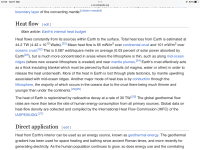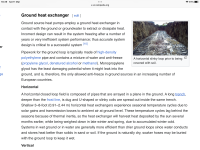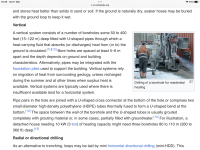Cornish Ian
Member
I am familiar with the concept of absolute zero and there is no need to go into long explanations of basic engineering or science that I would have encountered many years ago.As i expected you’re twisting things to suite your narrative.
1. If air is being warmed by the condenser is rising that is convection (warm ait rising) I have no idea what you mean by “replaced by convection” but the only thing being “charged’ is the air, as it is being charged with heat from the condenser, there is no “charge’ going into the heat pump system in this case the fridge
2. but its not going in a different direction, it is just a different application of a heat pumping system. Take the heat from point A and move it to point B. A fridge still heats.
3.
yep, the point i keep making over and over again.
The snow does not “insulate” the ground.
In your model if all the heat came from the sun and the If the snow on the ground insulated the ground from getting warm then there would be no heat in the ground at all ever.
So that cannot be the case.
If the snow insulated the ground keeping the ground heat in, then the snow would melt rapidly and not settle as the ground would always be significantly above the freezing point of water. What actually happens and your graph proves this is that the cold athmospthere and the snow does cause the ground to get cold, leading to permafrost. The point that the temperatures start to tip above 0’C can be a couple of feet down In very cold regions well below the “insulating” snow.
The other misconceptions are caused by the way we measure temperature, we say -40’C and we think thats really cold it’s a negative number and therefore it must be taking energy away.
When we start using more scientific ways of measuring temperature -40’c is 313Kelvin which now suddenly seems quite warm compared with zero Kelvin So there is a lot more energy in 313Kelvin than there is in Zero kelvin? same as there is a lot more energy in -40’c than their is in -273.15’C
So once again a ground source as well as any other heat pump does rely on heat from the sun, recharging the ground, the ground is always warm/contains energy (especially if you consider kelvin measurements) even where the sun don’t shine and the ground surface is always frozen.
If the pipes are near the surface and its the middle of summer heating the surface… sure the ground source heat pump will work better and more efficiently than in the winter, but who is running their heat in the summer?
Anyway I presume you are familiar with temperature gradients through solids. A simple yes or no will suffice.
Assuming you do understand that then I will explain how the heat from the earths core affects ground source heat systems.





